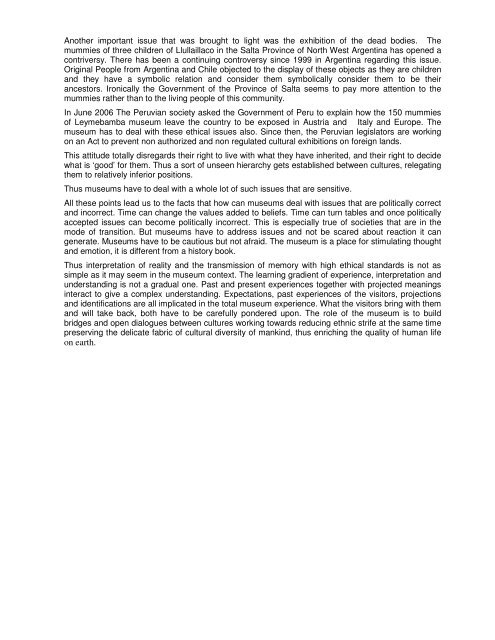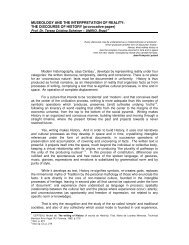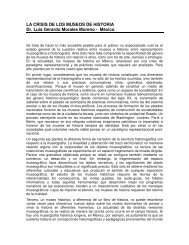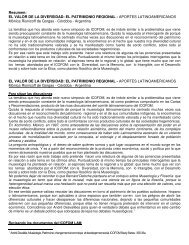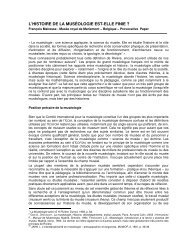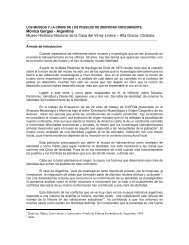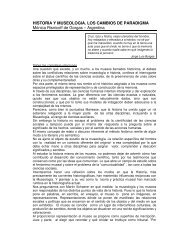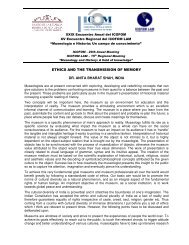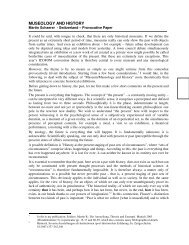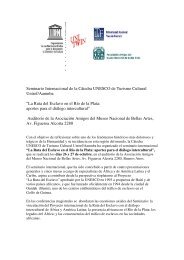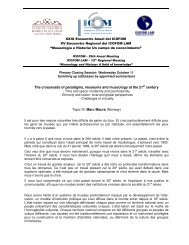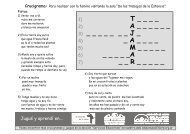ANNALYIZING SUMMARY Dr. Anita B. Shah Museums and ...
ANNALYIZING SUMMARY Dr. Anita B. Shah Museums and ...
ANNALYIZING SUMMARY Dr. Anita B. Shah Museums and ...
Create successful ePaper yourself
Turn your PDF publications into a flip-book with our unique Google optimized e-Paper software.
Another important issue that was brought to light was the exhibition of the dead bodies. The<br />
mummies of three children of Llullaillaco in the Salta Province of North West Argentina has opened a<br />
contriversy. There has been a continuing controversy since 1999 in Argentina regarding this issue.<br />
Original People from Argentina <strong>and</strong> Chile objected to the display of these objects as they are children<br />
<strong>and</strong> they have a symbolic relation <strong>and</strong> consider them symbolically consider them to be their<br />
ancestors. Ironically the Government of the Province of Salta seems to pay more attention to the<br />
mummies rather than to the living people of this community.<br />
In June 2006 The Peruvian society asked the Government of Peru to explain how the 150 mummies<br />
of Leymebamba museum leave the country to be exposed in Austria <strong>and</strong> Italy <strong>and</strong> Europe. The<br />
museum has to deal with these ethical issues also. Since then, the Peruvian legislators are working<br />
on an Act to prevent non authorized <strong>and</strong> non regulated cultural exhibitions on foreign l<strong>and</strong>s.<br />
This attitude totally disregards their right to live with what they have inherited, <strong>and</strong> their right to decide<br />
what is ‘good’ for them. Thus a sort of unseen hierarchy gets established between cultures, relegating<br />
them to relatively inferior positions.<br />
Thus museums have to deal with a whole lot of such issues that are sensitive.<br />
All these points lead us to the facts that how can museums deal with issues that are politically correct<br />
<strong>and</strong> incorrect. Time can change the values added to beliefs. Time can turn tables <strong>and</strong> once politically<br />
accepted issues can become politically incorrect. This is especially true of societies that are in the<br />
mode of transition. But museums have to address issues <strong>and</strong> not be scared about reaction it can<br />
generate. <strong>Museums</strong> have to be cautious but not afraid. The museum is a place for stimulating thought<br />
<strong>and</strong> emotion, it is different from a history book.<br />
Thus interpretation of reality <strong>and</strong> the transmission of memory with high ethical st<strong>and</strong>ards is not as<br />
simple as it may seem in the museum context. The learning gradient of experience, interpretation <strong>and</strong><br />
underst<strong>and</strong>ing is not a gradual one. Past <strong>and</strong> present experiences together with projected meanings<br />
interact to give a complex underst<strong>and</strong>ing. Expectations, past experiences of the visitors, projections<br />
<strong>and</strong> identifications are all implicated in the total museum experience. What the visitors bring with them<br />
<strong>and</strong> will take back, both have to be carefully pondered upon. The role of the museum is to build<br />
bridges <strong>and</strong> open dialogues between cultures working towards reducing ethnic strife at the same time<br />
preserving the delicate fabric of cultural diversity of mankind, thus enriching the quality of human life<br />
on earth.


